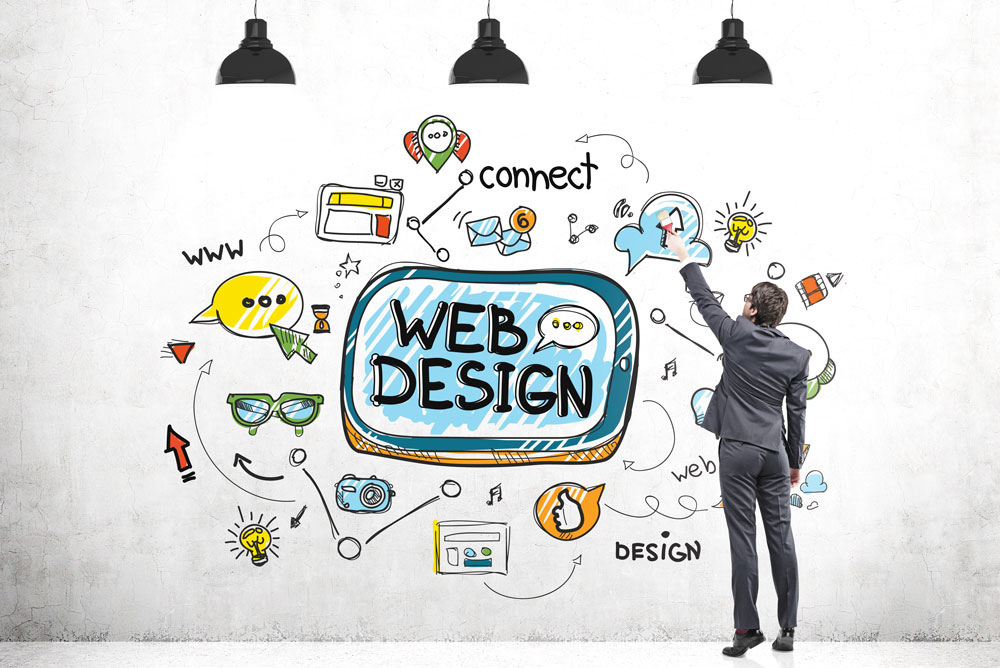Proven Techniques for Enhancing Your Website via Superior Web Design
Proven Techniques for Enhancing Your Website via Superior Web Design
Blog Article
The Comprehensive Overview to Crafting Visually Appealing and Useful Website Design That Fulfills Individual Needs
In today's digital landscape, the relevance of crafting internet layouts that are both aesthetically enticing and functional can not be overstated. By prioritizing user-centered style principles, developers can produce experiences that not only draw in however likewise maintain user rate of interest - web design.
Comprehending User-Centered Design
At the heart of efficient web design exists the concept of user-centered style, a viewpoint that prioritizes the demands, choices, and actions of customers throughout the advancement procedure. This strategy involves detailed research to comprehend the target market, making sure that the final product reverberates with its designated users. By incorporating individual feedback at every stage, developers can create user interfaces that are not just visually appealing but user-friendly and additionally practical.
User-centered design stresses empathy, calling for designers to enter the customers' shoes and consider their perspectives. Strategies such as user personas, trip mapping, and usability screening are employed to determine pain factors and opportunities for improvement. This iterative procedure allows for continuous improvement, as designers adapt to developing customer requirements and technical improvements.
Incorporating user-centered layout results in increased customer fulfillment and engagement, inevitably resulting in greater conversion rates and brand commitment. It promotes a joint atmosphere where stakeholders, consisting of designers, programmers, and users, interact to achieve a shared vision. By placing users at the center of the design procedure, organizations can produce websites that not just fulfill service goals yet likewise supply meaningful and satisfying experiences for customers.
Trick Concepts of Visual Style
Efficient aesthetic style functions as the foundation for developing interesting and user-friendly websites. It incorporates several crucial concepts that direct developers in crafting cosmetically pleasing and functional interfaces.
First, equilibrium plays an essential duty in accomplishing visual consistency. Developers ought to disperse elements evenly throughout the format to stay clear of frustrating users. This can be accomplished with asymmetrical or in proportion style methods.
Following, contrast boosts readability and accentuates essential aspects. By utilizing varying forms, shades, or sizes, designers can produce prime focus that assist individuals via the material.
Furthermore, alignment is important for arranging info. Consistent alignment of message and pictures promotes a tidy design, improving general navigation and user experience.
Distance additionally adds to aesthetic clarity. Grouping related things with each other help individuals in understanding the partnership in between different aspects, making the interface more instinctive.
Last but not least, uniformity in style elements, such as shades, font styles, and designs, reinforces brand name identification and helps individuals browse the site more easily. By including these essential concepts of aesthetic design, web developers can develop interfaces that are not only aesthetically enticing but likewise useful and user-centered.
Value of Responsive Layout
Receptive layout is a crucial aspect of contemporary internet growth, guaranteeing that web sites operate seamlessly across a selection of tools and display dimensions. As the internet landscape evolves, the diversity of devicesâEUR" ranging from smartphones to tablets and desktop computersâEUR" requires a layout strategy that suits all users.
Executing responsive design enables a versatile design that instantly adapts based on the user's screen dimensions. This adaptability not just boosts ease of access however additionally boosts use, as customers can browse and interact with the website easily, no matter their tool.

Furthermore, responsive layout lowers the demand for preserving multiple versions of a website, streamlining updates and material management. This performance equates into price savings and an extra cohesive brand name experience throughout systems.
Enhancing Individual Experience
User experience (UX) is an essential component of website design, influencing how site visitors communicate with an internet site and perceive its worth. A well-crafted UX ensures that users can browse with ease, locate info easily, and accomplish their objectives efficiently. The style has to take into consideration the user's trip, from the moment they land on the site to the completion of their desired action, whether that be purchasing, registering for a newsletter, or accessing information.
Trick components that boost UX consist of clear navigation, receptive formats, and interesting aesthetic web content. Consistency in design elements such as buttons, shades, and fonts cultivates knowledge, making the web site feel cohesive. Additionally, maximizing tons times is important; individuals are much you could try these out less likely to stay on a website that is slow-moving to react.

Checking and Repeating Styles
Checking and iterating designs are basic procedures that comply with the preliminary creation of a website, ensuring that the customer experience continues to be at the forefront of any kind of changes. These stages entail gathering customer comments, assessing layout efficiency, and making educated modifications to enhance use and involvement.
Usability testing enables developers to observe actual users as they connect with the website, identifying discomfort points and areas for renovation. User surveys can use qualitative understandings, recording user sentiments and preferences.
When screening is completed, the version stage starts. This entails refining the layout based upon the collected information, prioritizing modifications that straighten with customer needs and business goals. Continual model fosters an adaptive design method, where the internet site evolves in reaction to individual habits and comments. By devoting to strenuous testing and version, designers can create a web site that not just fulfills visual requirements however likewise delivers a enjoyable and smooth user experience.

Final Thought
In verdict, effective web style requires the combination of user-centered concepts, vital aesthetic design elements, and responsive frameworks to produce appealing interfaces. By prioritizing user needs and implementing continuous testing and iteration, developers can improve their productions to boost general contentment. The dedication to these methods not only fosters a visually appealing visual yet likewise makes sure capability throughout diverse devices, ultimately contributing to a favorable customer experience and raised involvement.
By focusing on user-centered style principles, designers can produce experiences that not only bring in yet likewise keep individual interest.At the heart of effective internet style lies the concept of user-centered design, imp source an approach that prioritizes the requirements, choices, and behaviors of customers throughout the development process. By putting users at the forefront of the design procedure, organizations can produce websites that not only meet business goals however additionally supply meaningful and gratifying experiences for users.
By prioritizing user needs and choices, internet designers can create experiences that are not just visually attractive yet likewise useful, inevitably cultivating customer complete satisfaction and loyalty.
Customer studies can offer qualitative insights, recording individual sentiments and choices.
Report this page